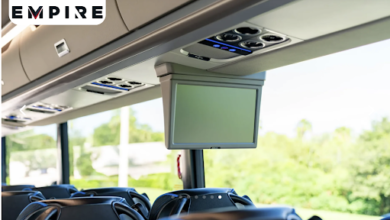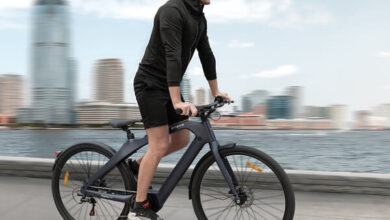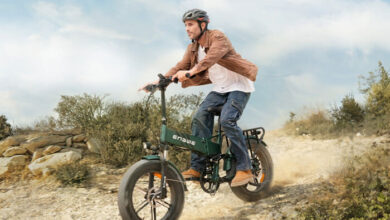What to Wear on an Everest Helicopter Tour: Stay Warm & Safe

Imagine soaring above the Himalayas, the morning sun illuminating the icy peaks of Everest, your heart racing with excitement. But within minutes, the helicopter ascends to bone-chilling altitudes, and that excitement can quickly turn into discomfort if you’re not properly dressed.
An Everest helicopter tour is one of the most thrilling and visually stunning adventures you can experience in Nepal. It combines luxury with the raw power of nature. However, with altitudes reaching over 5,000 meters, the cold, wind, and intense UV rays can catch unprepared travelers off guard. This isn’t just about staying cozy for photos – it’s about protecting yourself from harsh elements that can turn a once-in-a-lifetime journey into a miserable ride.
Unlike regular sightseeing trips, this one takes you face to face with some of the world’s harshest conditions. It demands thoughtful preparation and the right clothing strategy. Even on clear days, the temperature can plummet, and UV rays reflect off the snow, intensifying their impact on your skin and eyes.
So, what should you wear on an Everest helicopter tour to stay warm and safe? That’s the question this guide answers in detail. Whether you’re traveling in spring, autumn, or the depths of winter, we’ll help you layer smart, pack wisely, and dress for both comfort and high-altitude safety. Let’s make sure the only thing taking your breath away is the view – not the cold.
Why Proper Clothing Matters on an Everest Helicopter Tour
Temperatures at Everest Base Camp can drop to -10°C (14°F) even in spring. Add wind chill, and it feels even colder, especially when exiting the helicopter for a brief stop.
Helicopters don’t have cabin pressurization or central heating like commercial flights. The cold creeps in fast at altitude and can be brutal if you’re not layered correctly.
Real Talk: What Guides and Locals Say
Trekking guides and Sherpas often say, “Dress like you’re hiking, not flying.”
They’ve seen travelers show up in jeans or light jackets—only to shiver for the entire ride and regret their decisions.
Experienced locals recommend layering like you’re trekking to base camp, even if you’re just landing there briefly. Sherpas know that the high-altitude sun can fool tourists into thinking it will stay warm throughout.
Why the Right Gear Makes a Difference
Wearing the wrong clothing can lead to:
- Cold stress and numb fingers or toes
- Windburn or frostnip, especially on exposed skin
- Headaches triggered by poor circulation or sudden cold exposure
- Increased fatigue and discomfort from body heat loss
Scientific fact: At 5,000 meters, the air holds significantly less heat. Body temperature drops quickly without proper insulation and wind protection.
Ideal Clothing Layers for an Everest Helicopter Tour
The secret to staying warm on an Everest helicopter tour? Layering. It lets you adjust for altitude changes, wind shifts, and temperature swings throughout the flight.
1. Base Layer – Stay Dry and Insulated
Your base layer is your first defense against cold. It should wick away moisture and trap heat.
- Choose merino wool or synthetic thermal tops and leggings.
- Avoid cotton, which holds moisture and chills the body.
Sherpas often rely on wool for its natural warmth and breathability. It remains warm even when damp—unlike cotton.
2. Mid Layer – Lock in Warmth
The mid layer provides insulation between your skin and the elements.
- Go with a fleece jacket or lightweight down mid-layer.
- Softshells with some stretch also work well for comfort.
Real-world tip: A good mid-layer keeps you warm even if the outer shell flaps open briefly in the wind. If you remove your jacket for a photo or stretch, this layer is your safety net.
3. Outer Layer – Block Wind and Water
This is your shell against high-altitude elements.
- Wear a windproof, waterproof jacket with a hood.
- Look for jackets with adjustable cuffs and sealed seams.
4. Bottoms and Footwear – Protecting the Lower Body
Your legs and feet are just as exposed to the elements as your upper body.
Cold wind sweeping through the cabin or while landing can numb your legs in minutes, even on a sunny day.
What to Wear on Your Lower Half:
- Thermal leggings or merino wool base layers work well beneath trekking pants.
- Fleece-lined pants or insulated softshells add necessary warmth without bulk.
- Water-resistant outer pants are helpful if you’re landing on snow or icy ground.
Guides recommend pants with zippered vents. They offer airflow in the cabin but trap heat on landing.
Footwear That Keeps You Comfortable:
- Insulated hiking boots are a must. Your feet will be the first to feel the cold.
- Avoid sneakers or thin-soled shoes, even on sunny days.
- Pair boots with thermal or merino wool socks for optimal insulation.
Sherpas often wear double-layered socks—thin liners under thick wool—to avoid cold toes during early morning climbs. Some even recommend slipping foot warmers inside boots on colder days.
A real-world reminder: Several travelers have reported that the floor of the helicopter feels icy cold. Solid boots act as a barrier and support grip during short icy landings.
Pro Tip:
Bring an extra pair of warm socks in your daypack. Wet feet = freezing feet. Always.
Knowing what to wear on an Everest helicopter tour includes planning for your lower body.
With the right pants and boots, you’ll step out onto snowy ground feeling confident, protected, and ready to take in the view.
5. Accessories – Small Items, Big Impact
Accessories can make or break your comfort level at high altitudes. They’re small, but they do heavy lifting.
Must-Have Warm Accessories:
- Gloves: Choose insulated, windproof gloves. Touchscreen-friendly tips are a bonus for snapping photos mid-flight.
- Hat or Beanie: Cover your ears. A fleece-lined beanie keeps in body heat where it escapes most.
- Neck Gaiter or Buff: Protects your neck and face from windburn and icy air. Multipurpose and lightweight.
Sherpas often wrap a simple wool scarf around their lower face during high-altitude ascents. It’s effective and simple.
Eye and Skin Protection:
- Sunglasses: UV-protected lenses are essential. Snow glare at 5,000 meters can cause snow blindness.
- Sunscreen: Use SPF 30+ on all exposed skin. The sun’s rays are stronger at high altitudes.
Scientific tip: UV exposure increases by 10–12% for every 1,000 meters of elevation gain. Protect your eyes and skin accordingly.
Optional but Useful:
- Hand warmers: Great for gloves or pockets on extra cold mornings.
- Lip balm with SPF: Prevents cracked lips caused by wind and dry air.
- Camera gloves: Thinner gloves that allow you to operate a camera without freezing your fingers.
- Compact thermos: Warm fluids can make a difference on early morning flights.
Having the right accessories ensures your Everest helicopter tour is warm, safe, and comfortable—from takeoff to touchdown. It’s not just about adding gear; it’s about thoughtful, functional additions that enhance the whole experience.
Knowing what to wear on an Everest helicopter tour isn’t complete without these final details. They turn a good trip into a great one.
Dress smart, fly warm, and enjoy the adventure of a lifetime.
Clothing Mistakes to Avoid on Your Everest Helicopter Ride
Even the most experienced travelers make packing errors at high altitude. Here’s what you shouldn’t wear on an Everest helicopter tour.
1. Wearing Cotton Instead of Technical Fabric
Cotton holds moisture and dries slowly. It can leave you chilled to the bone at altitude.
Use moisture-wicking fabrics like merino wool or synthetic blends for all base layers.
2. Jeans or Fashion Pants
They may look stylish, but denim and thin pants offer zero insulation and restrict movement.
Sherpas joke that “denim is for Kathmandu, not for Everest.”
3. Low-Cut or Lightweight Footwear
Sneakers and low-cut shoes don’t protect your feet from the cold or wind.
Stick with insulated, waterproof hiking boots designed for cold-weather conditions.
4. Skipping Essential Accessories
No gloves, no hat, no gaiter? You’re asking for trouble.
Exposed skin is vulnerable to windburn, frostnip, and sun damage at 5,000 meters.
5. Overpacking Without Layering Strategy
Wearing too much bulk or mismatched layers can limit mobility and overheat you inside the helicopter.
Stick to breathable, flexible layers that allow quick adjustments.
Quick Recap: Everest Helicopter Tour Clothing Don’ts
- Avoid cotton and denim
- Don’t wear low-cut or thin-soled shoes
- Don’t skip key accessories like gloves, hats, and sunglasses
- Don’t overdress without a layering system
Knowing what not to wear on an Everest helicopter tour is just as important as knowing what to bring. Mistakes in preparation can take away from the magic of the experience.
These simple adjustments can protect your comfort—and your trip—from altitude-related clothing mistakes. A little planning goes a long way.
Conclusion: What to Wear on an Everest Helicopter Tour
Dressing for an Everest helicopter tour isn’t just about style—it’s about safety, comfort, and making the most of your experience. The right gear helps you enjoy every second in the sky, from clear views of Everest to landing on snowy terrain. It also keeps you focused on the awe-inspiring scenery instead of worrying about your fingers going numb.
Remember the basics: moisture-wicking base layers, warm insulating mid-layers, windproof outer shells, sturdy boots, and smart accessories. Avoid common mistakes like wearing cotton, skipping gloves, or dressing too light. Think of each clothing item as part of your safety system.
If this guide helped you feel more prepared for your Everest adventure, share it with a fellow traveler or leave a comment with your questions or tips. We’d love to hear about your experience or gear recommendations.
Ready to fly above the world’s highest peaks? Gear up—and let the mountains move you.




